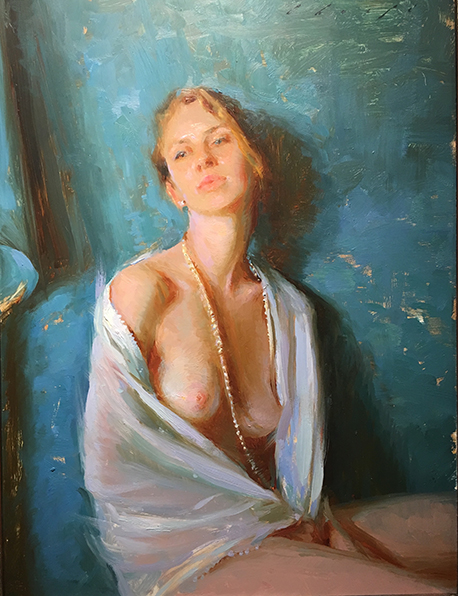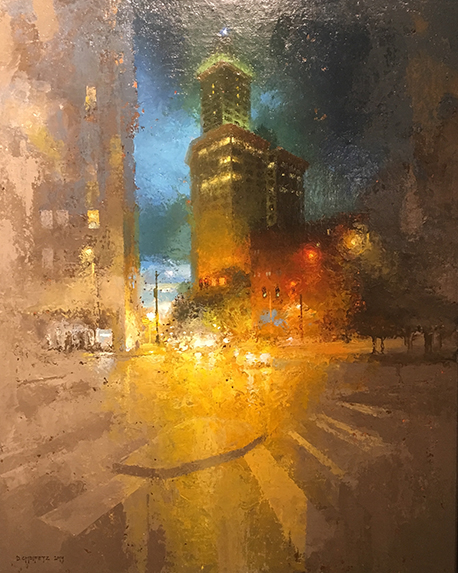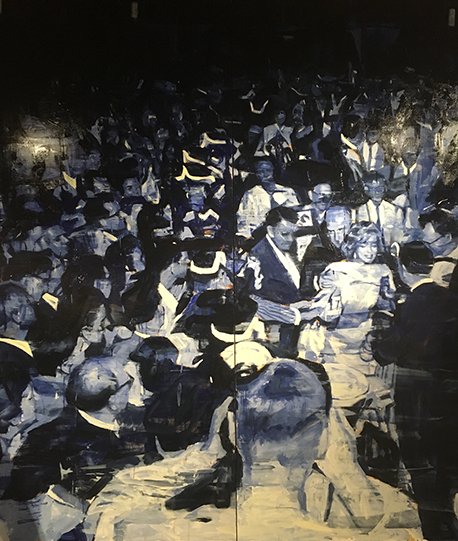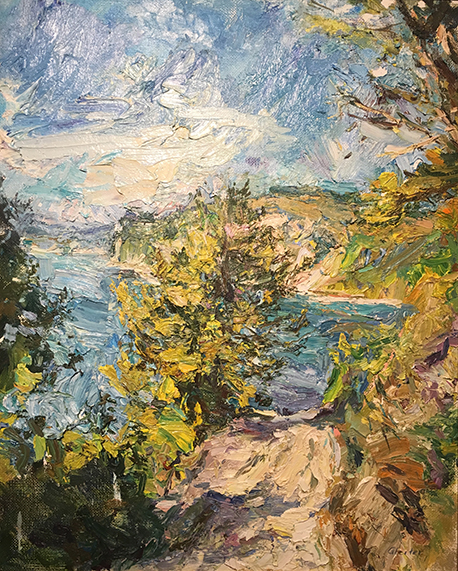Group Exhibition XIII |
| reviewed by Felissia Cappelletti (February 2016) |
|
|
|
|
|
Family resemblance -- that indication whether visible or in temperament, of a common providence. If you have siblings, no doubt you’ve heard a time or two about the ways in which you are similar. I think people appreciate picking up on the common threads stitched throughout a family fabric because they illuminate some core essence of the group as a whole. Where are they from? What are their core values and shared characteristics? Those common traits give the family a sense of unity with each other and distinction from others. I met two sisters recently. First one, then the other the following week. It is plain to see they are related. The resemblance is clear. They are the sister galleries, Abend and Gallery 1261. First, I visited Abend for the "Animalia" show there. You can read my review of that show here: http://www.uturn.org/Capblog/blog12.htm. I was impressed by the representational quality of the selected works in the show. Abend has a sharp taste toward classical talent -- but also toward funk. There is a young, urban pop to Abend. A sense of humor, an eccentric style. She is more the free thought, exaggerated realism, larger-than-life, new movement type. Then last Friday, I met her sister, Gallery 1261. I immediately noted the artsy-chic environs, established confidence, and refined taste. She must be the beautiful, mature older sister, high-bred, and highly educated, yet slightly reserved. In both sisters it is clear they have roots in the same aesthetic. So where does that come from? The family dynamics are a little bit complicated. Chris Serr is the owner of Abend and co-owner, along with local artist Quang Ho, of 1261. Chris’s son, Connor, and her brother, Dave, are each co-curators at Abend and they manage and direct (respectively) 1261. Working so closely with each other and with both galleries, the values and aesthetics of the common family are incorporated into the collections on display in both places. The show at 1261, called "Group Exhibition XIII," is, as you might imagine from the title, not as thematically potent as Animalia. Personally, I enjoy seeing themed shows for the focus and the story-telling it brings to a collection. I tend to see more far-reaching, eclectic pieces with a themed show because you never know where an artist’s mind will carry the prompt. In "Group Exhibition XIII," I was still able to feel a consistency throughout the show, but due more to the personal preferences and “eye” of the curators rather than any narrative or collective creative vision of the artists themselves. Gallery 1261 prominently features figurative work including several portraits. Figurative work, and portraits in particular, are historically difficult for galleries to sell. Even the most gorgeous portrait of the most angelic sylph is still just a picture of some girl’s face you don’t know. For gallery owners trying to appeal to collectors who will have that anonymous girl hanging in their home, it can be a hard sell. That’s why you don’t often see a commercial gallery show classical representational style portraits. Quang addresses this in his statement regarding the mission of 1261, “It’s about the art. It’s about pure artistic expression. It’s about the work an artist creates for his own soul … done without constraints of marketing strategies and sales quotas.” A place with that mission might be a Shangri-La for artists practicing the noble craft. Let me wax poetic, now, about some of the highlight pieces in "Group Exhibition XIII." Shadows on Blue, one of several figurative pieces by Suchitra Bhosle, caught my eye as being one of the most elegant figurative pieces in the show. Reflective and calm, the shades of blue here are many, and to great effect. The title is apt, for the piece is swimming in variants of shadow. Bhosle’s representational touch stops short of photographic, moving brush strokes beyond their allotted place in line. The effect is slightly smudgy, inviting the experience of texture, giving the scene a ‘remembered’ quality. Small, thoughtful brushstrokes create halos of value, not blending just enough to craft that painterly feel. As with most art, this lovely piece should be examined face-to-face to appreciate its care and multi-faceted complexion.
They’re waiting for you at Gallery 1261. |
|
|
|
--The End
--
|



